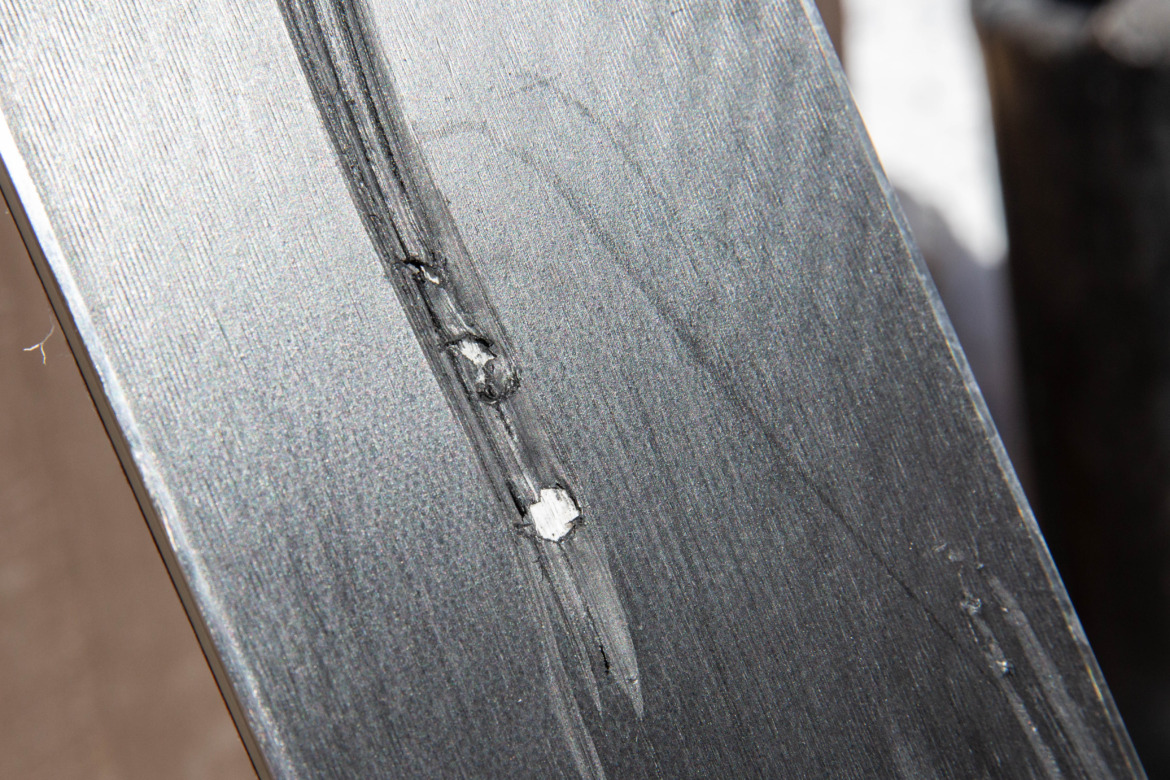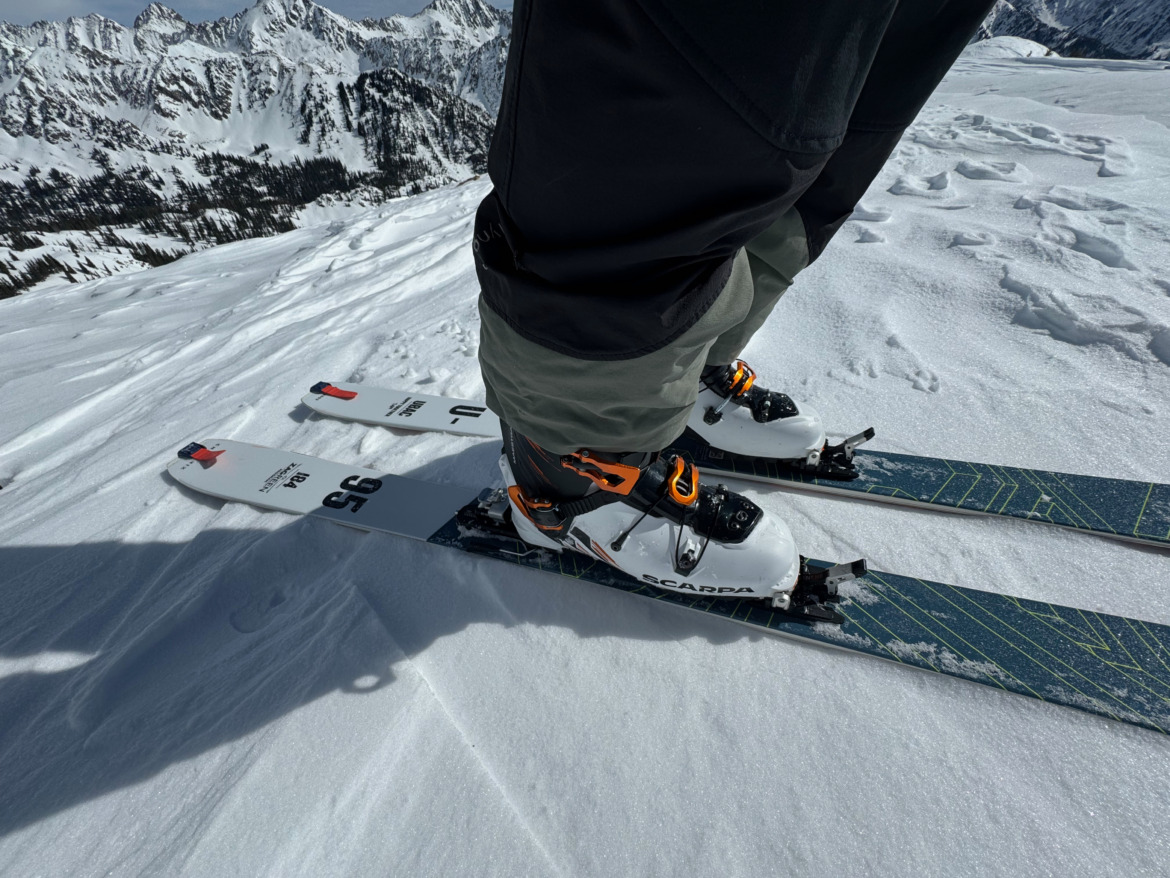
It didn’t take long to feel comfortable on ZAG’s updated 2024/25 UBAC 95s, but I eased in anyway. I felt like I knew them quickly through soft snow, trees, soft chop, and powder. They just felt easy right off the bat in good conditions. But then one nighttime tour, WHAM, I landed on my face, scorpion style, and both skis shot off my feet into the darkness.
That was a demo binding setup error on my part. And while my confidence was shaken and a light concussion set in, I slowed down and eased back into trust building with the UBAC 95s. They weren’t like the other skis I’ve been testing this year.
My first few weeks with the UBAC 95s did not showcase Colorado’s best backcountry conditions. It was a lot of hardpack, breakable crust, and sun-baked nastiness, with the occasional fluffy windrift thrown into the mix. And like with most skis in those conditions, I wasn’t thrilled.
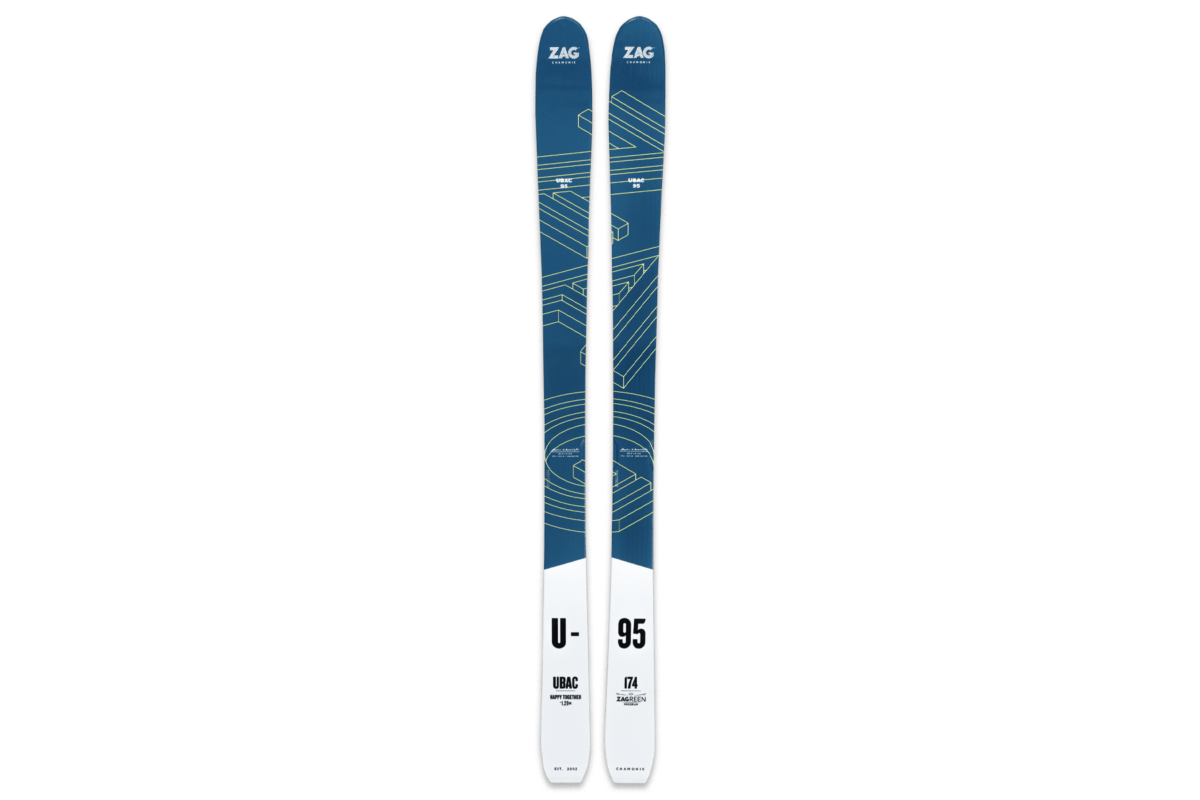
My preconceptions about the UBAC 95s were faulty at best. I had assumed that they’d be stiff, with a stout, stable edge for icy steep skiing. I expected some sacrifices in liveliness and soft snow skiability. And that preconception comes from my clearly loose understanding of skis designed in and for Chamonix, one of the world’s steep-skiing capitals.
ZAG has been a boutique ski brand in France for 20 years but if you haven’t heard of them, that’s understandable as this is their first year breaking into the North American market (you can buy them on Evo.com this year and their whole lineup appears to be on-sale as we near the end of the ski-buying season.)
I expected a rugged steeps weapon, but the opposite was actually true. The UBAC 95’s were much softer than I expected both lengthwise and torsionally, especially in the shovels. That meant they weren’t ideal for the harsh conditions at hand – they felt imprecise and a little bit nervous, but they came alive once snow conditions improved.
The UBAC 95’s sport 130.5/96/117 dimensions in the 184cm length, which lands them in the second skinniest slot of the four model UBAC line. In terms of shape, they’ve got moderate tip and tail rockers and a medium camber underfoot – basic, tried-and-true geometry.
At their core is paulownia with a layer of carbon and glass fibers, and a sheet of phenol underfoot for binding retention instead of titanal, presumably for weight savings. That’s all packaged together with full ABS sidewalls.
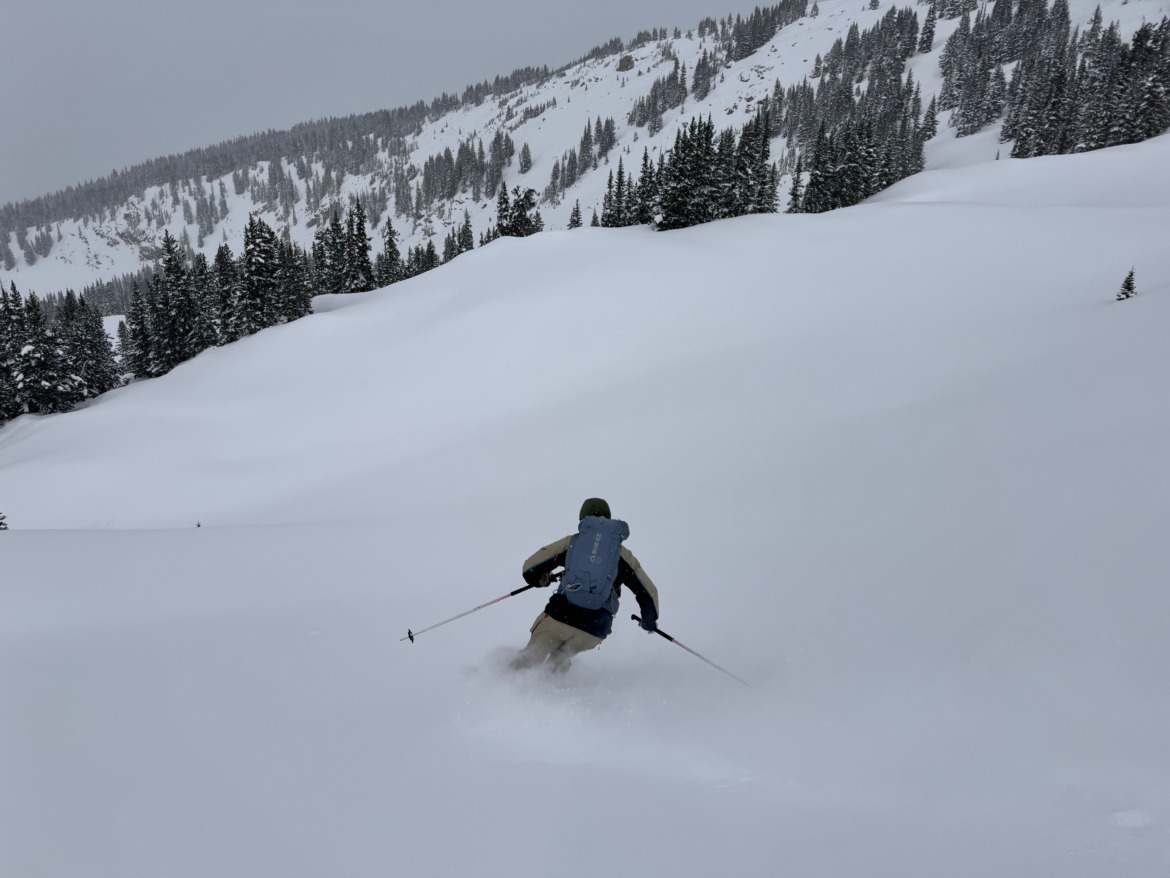
Skiing the UBAC 95s. Photo: Peter Van Dyke
Skiing Performance
Despite having only a few months with the demo skis, I was able to ski them in just about every snow condition I’d typically find between November and June in Colorado’s backcountry. Most of it good, some of it downright nasty.
As soon as the high-pressure system moved on and the snow started falling, I found their sweet spot. They weren’t floaty like big powder skis, but they remained lively, quick, and agile in the deep stuff. Better, in fact, than I would have expected from a ski less than 100mm underfoot. Anytime the snow trended toward soft, the UBAC 95s performed well – not better than most powder skis, but good considering their conservative dimensions. They were easy to pivot and smear even at slower speeds, which isn’t always the case for traditionally cambered skis in this width class.
The UBAC 95’s are quick, short turn radius skis rather than big, longturn crushers. The formulaic 19.5m turn radius is short, and I found that in reality they thrived with even shorter turns. Low-angled powder turns, for example, felt fun and lively where bigger skis can feel sluggish.
As a friend and I ventured out for a few afternoon hot pow laps, I wasn’t sure how they’d fare considering that they tend to get tossed around by hard chunky snow, but they did surprisingly well in the south facing dense, wet powder. With a little bit of speed, the tips stayed afloat, and they continued to excel with quick, active, short radius turns. They felt nimble in what would have been challenging conditions aboard bigger, heavier, longer-turn oriented skis.
They reacted similarly to sun crust. Sun crust is still the worst, but I didn’t feel like the UBAC 95’s got locked in as drastically as with some other skis I’ve been on. Changing direction didn’t feel like as much of a chore – I was able to jump turn and pivot without much trouble, aided by the light weight and generous tip rocker. “Easy” is the descriptor I keep coming back to. Easy and predictable through most soft(ish) conditions.
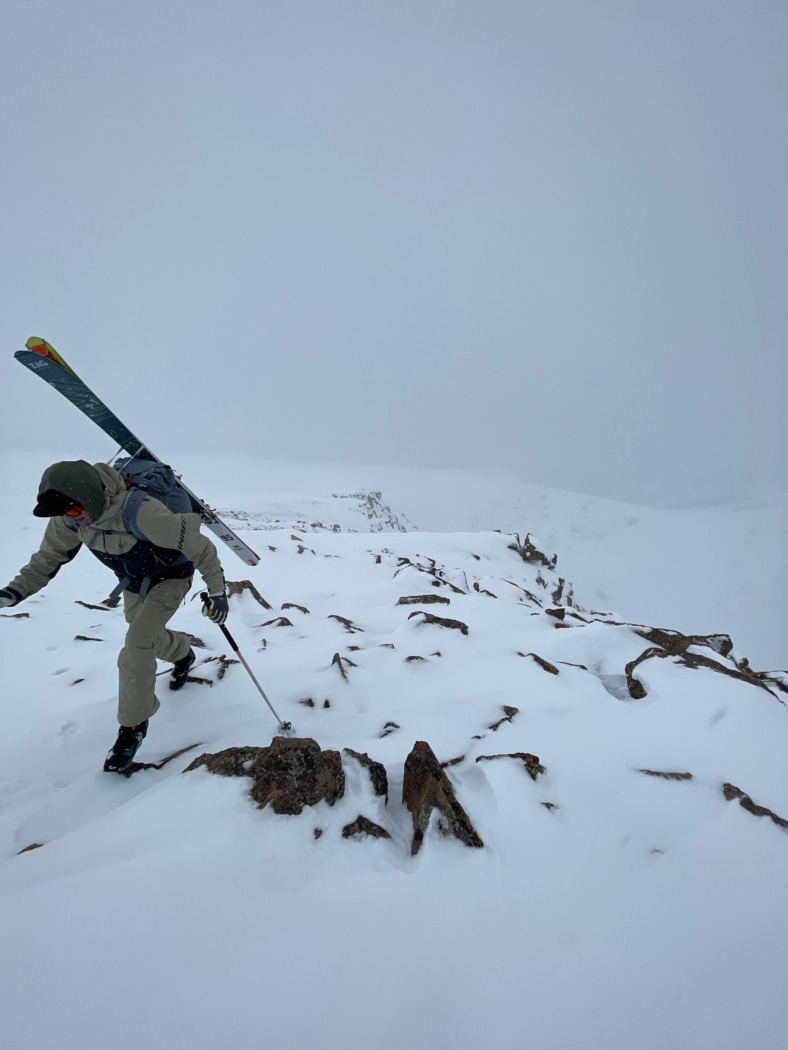
The UBAC 95s are light on their feet and on your back. Photo: Jack Sunderland
Central Colorado’s snowpack hasn’t lent itself to steep skiing in the backcountry yet this season, but I was able to substitute with steep runs on the resort. And I’ll be honest, this isn’t the ski I’d take to the backcountry steeps, ski mountaineering, or anywhere I might encounter glacial ice. They just don’t hold a confidence-inspiring edge the way my Fischer Transalp 92s, Black Crows Orb Freebirds, or Kastle TX 103’s do. Despite the full wood core, they lack the torsional stiffness throughout the ski to give them good bite. The absence of metal underfoot is noticeable.
For that same reason, I wouldn’t employ these skis for any amount of resort skiing other than fitness laps. The slightly stiffer tails keep them from feeling like noodles, but like I said before, they’re vague and a little bit nervous on firm snow and ice.
Build & Setup
Given that they’re on the softer, friendlier side of the spectrum, I was able to get away with skiing them on my lightest boot, Scarpa’s F1 XT, even in their longest 184cm option (I typically break out the light boots for skis under 180cm long). They were a solid match all around.
I also threw my Fischer Transalp Carbon Pro’s at the helm, as well as the new Scarpa Maestrale RS, but those more powerful boots didn’t unlock any extra dimensions to the ski other than providing a little bit more support. The UBAC 95’s are light, soft skis that pair well with light, softer boots.
Even with a demo binding from ATK, the UBAC 95s felt light in hand and on foot. The specs agree. The 184cm length I tested clock in at a claimed 1,480g per ski. While they’re in the lightweight ballpark, they’re not the absolute lightest out there for the gram counters – the Blizzard Zero G 95’s clock in at 1315g (185cm), Atomic’s Backland 95’s are similar at 1,455g (185cm), and though slightly narrower, Fischer’s new Transalp 92 CTI’s weigh 1,310g in the 183cm length.
There weren’t any surprises on the skin track. The light weight and relatively low surface area on the snow compared to bigger powder boards meant they went uphill like they were born to do it. It’s certainly one of the arenas where they thrived.

The ZAG UBAC 95s on the up. Photo: Clayton Shaver
Durability
Lightweight skis can be vulnerable to premature rocky destruction. While I did bounce off my fair share of rocks, logs, and one buried metal gate (sorry ZAG), the bases are in decent shape, and have yet to suffer a core shot. This is a relatively short test period, though, given that they’re demos on loan from ZAG.
Justin Park, Wildsnow’s editor, didn’t have the same luck with the similarly constructed ZAG UBAC 112s (in 184cm. They’re 114mm underfoot here but 112mm if you go 176cm.) aimed at skiers looking for more float in backcountry pow without a huge weight penalty.
I received a demo pair of the ZAG UBAC 112s in early November and our snowpack wasn’t great. Feeling like I needed to get to testing, I skinned up my favorite local honey hole after a 6-inch dump in December. Uphill was pleasant despite the width, couldn’t wait for the downhill. The UBACs surfed comfortably and my first 10 turns were my best of the year to-date and then I lurched forward as I found bottom on a lightly covered rocky ridge that was buried just enough. But also not enough. See image below for core shot.
The photo is instructive mostly to show that this is a fairly thin-based ski which is part of how ZAG pulls off a 114mm-width ski that weighs a claimed 1640g. The core shot scraped fully through the base without a ton of effort. Most any lightweight touring fat skis will present a similar fragility. Turn lightly, my friends.
I repaired the crater and had a few more days on the 112s and came away with a similar general impression to Bergen’s on the 95s. The UBACs are stiff enough for their weight, quick in tight spots, and float great despite a 184cm length that’s on the short side for my preference and weight. No one likes breakable crust, but they did better than most staying near the surface. They weren’t much fun and chattered plenty on hard resort-skin groomers, but you wouldn’t expect them to be anything different given the weight and dimensions. My takeaway is that this is a compromise fat touring ski that tries to balance weight savings with performance in soft snow. I could see myself reaching for the UBAC 112s when I have a longer approach to get deep goods, but they’d likely stay home if I felt like I could stomach a few hundred extra grams to get a longer, damper pair to the top.
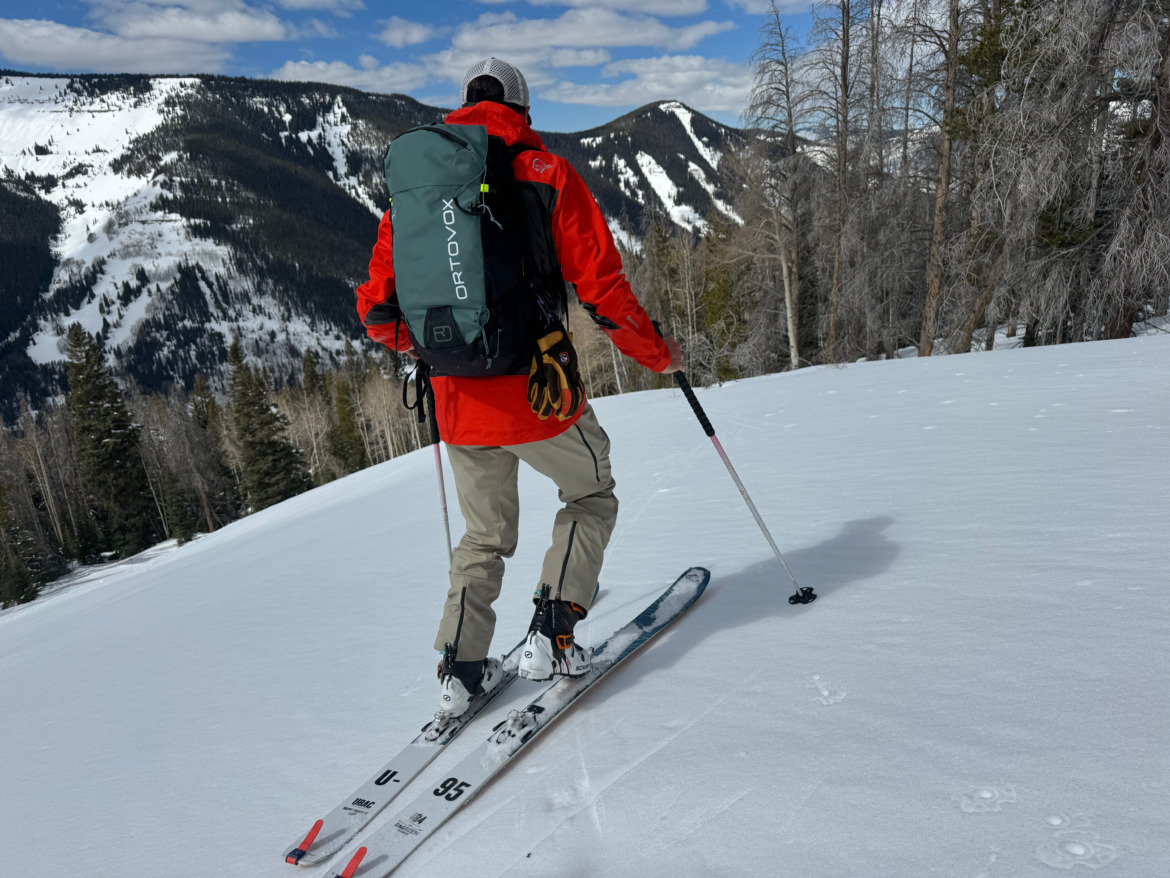
Who are they for?
So where do these skis fit in, and who are they for? I’ll start with who they’re not for. I wouldn’t recommend the UBAC’s 95’s for aggressive skiers demanding precision or power out of their touring rig. And while I haven’t tested them in the spring yet, I’m confident that they won’t be my first or second pick for objective-oriented steep skiing where exposure, freeze/thaw conditions, or ice is inevitably on the menu.
But for skiers interested in a mid-winter ski, who typically ski in soft snow, the UBAC would be a good match. Their soft, friendly character would make them good lightweight touring skis for beginner and intermediate skiers looking to venture deeper into the backcountry, too. Above all else, they’re easy to ski, even in ugly conditions like breakable crust. That’s not always the case for skis in this weight class, which can lose some handling ease in exchange for weight savings.
For more advanced skiers who aren’t interested in hauling a big, fat powder ski around, the UBAC 95s could fill the mid-winter low-angle powder skiing niche that occupies so much of Colorado’s winter. They can handle just about everything besides hard snow well if you’re willing to dial back the “freeride” just a hair and enjoy some mellow, short radius turns.
Conclusion
Every time I jump on new skis or boots, I’m immediately drawn to their weaknesses before I can flesh out where they shine. It’s my toxic trait. But over time, I grew to like the UBAC 95s when I eased off the gas and met them where they thrive – mellow turns, soft snow, lighter boots, longer days, and lots of vert. They’re not the skis I’m reaching for when I’m itching to ski fast and aggressively, or push my limits in the steeps. Rather, they pair well with Lou Dawson’s Light Tours of Colorado guidebook, mellow fluffy turns, and more casual mid-winter outings.
Not every backcountry skier is looking for stiff, powerful, hard-charging skis, but a lot of us are looking for one set of lightweight skis to handle early and mid-winter soft snow conditions. And for the right skier with the right backcountry intentions, the UBACs could fit the bill. Just know their limitations before you find yourself staring down an icy couloir.
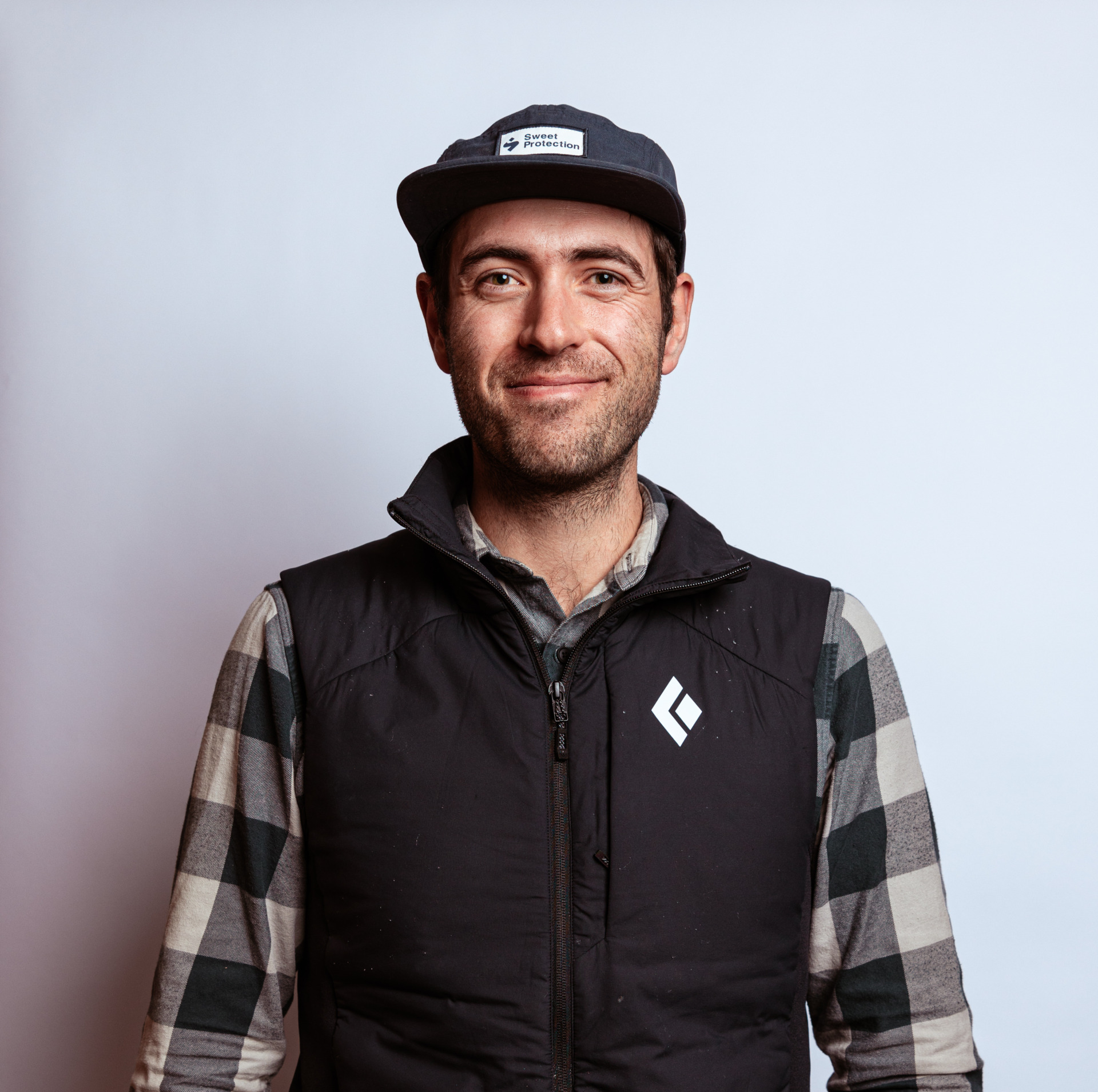
Bergen Tjossem is a ski fanatic, conservation professional, and nature nerd based in Vail, Colorado. His life and career have centered around protecting the natural environment and public lands that raised him, but as Ed Abbey put it, “It is not enough to fight for the land; It is even more important to enjoy it.” So when he’s not working his day job, you’ll find Bergen ski touring before dawn, ice climbing in the dark, running trails until his legs fall off, skiing 13er’s with his friends, or making the world’s best pizza with his wife, Rachel. You can find him on Instagram.

